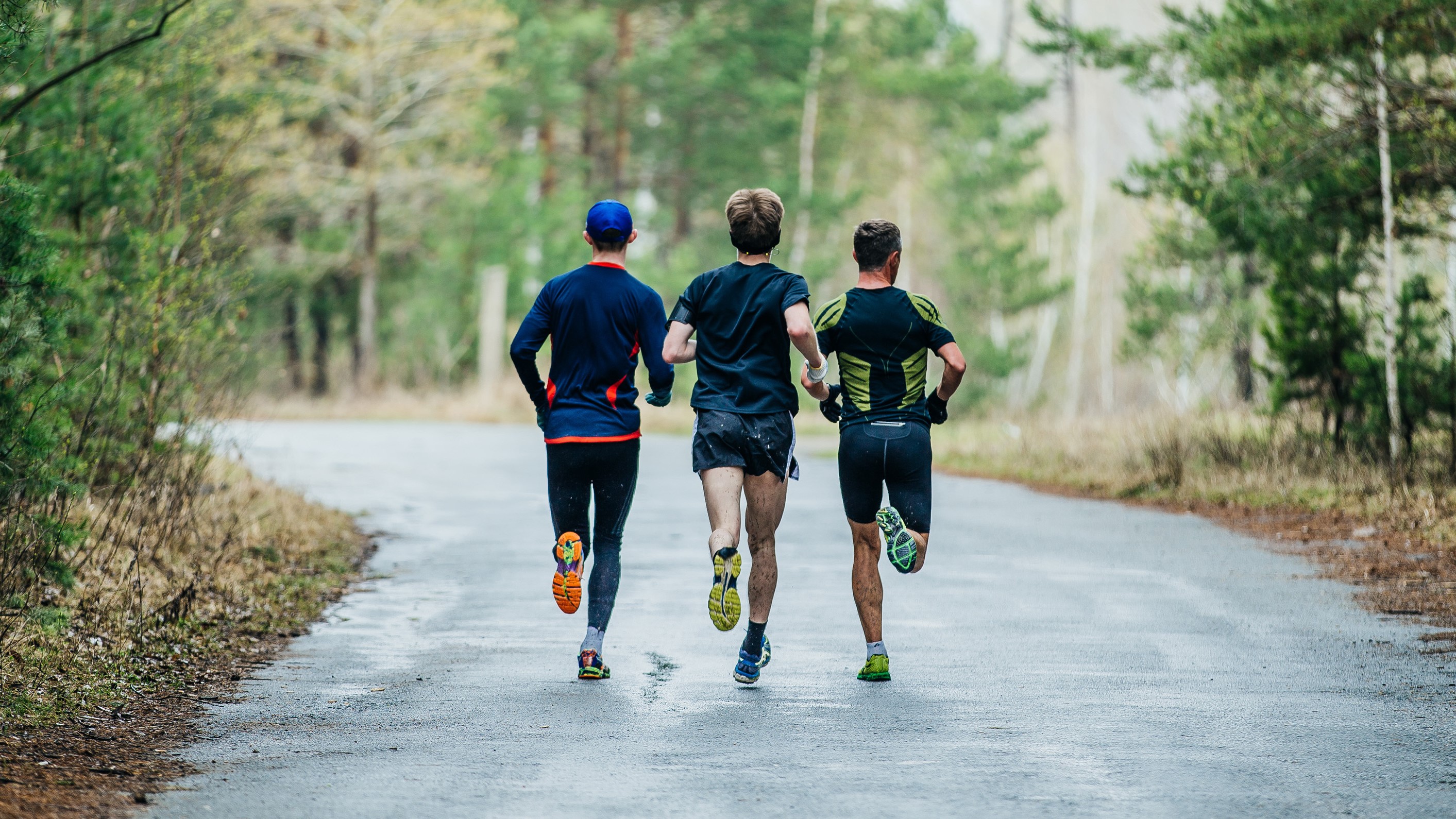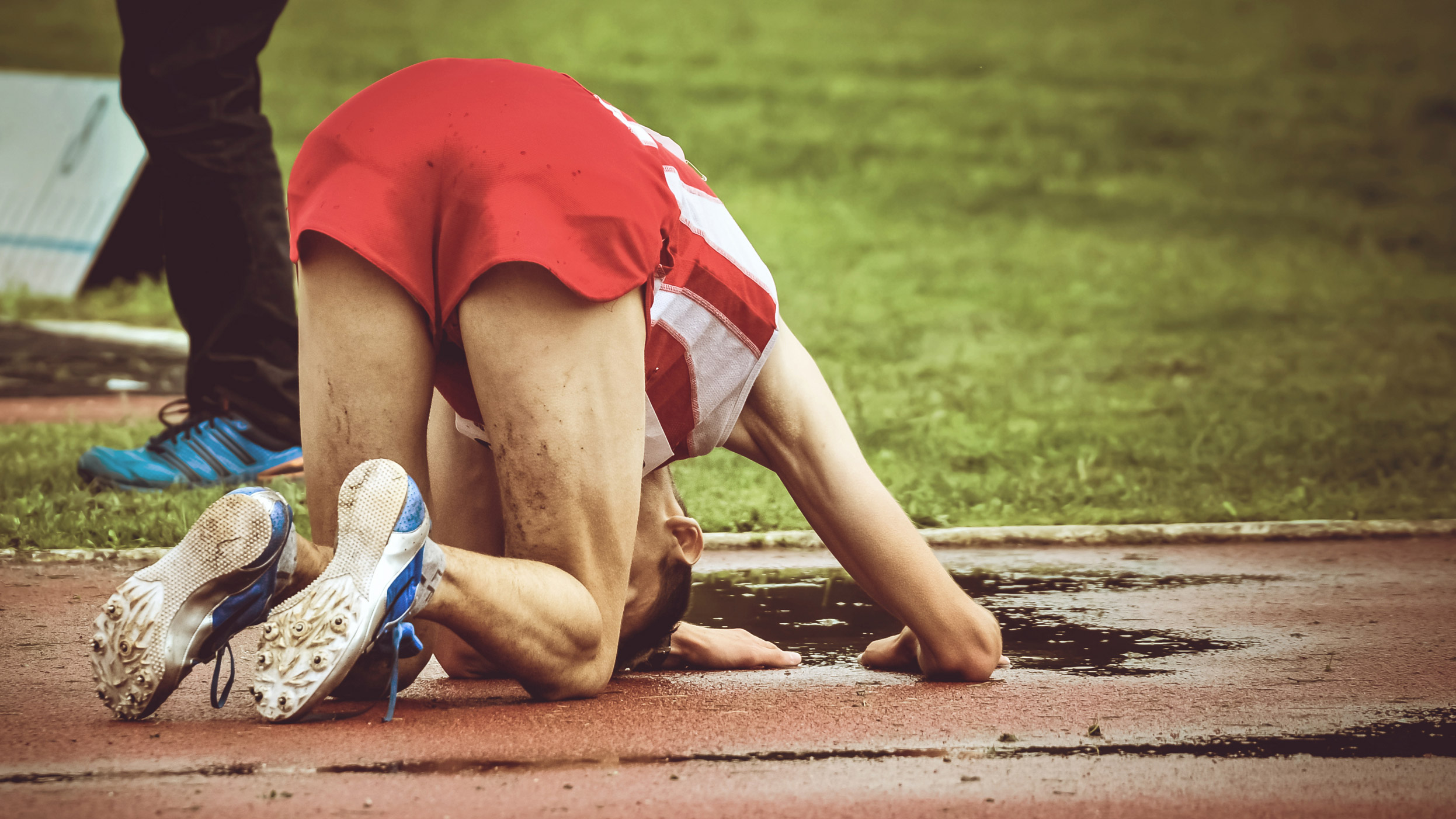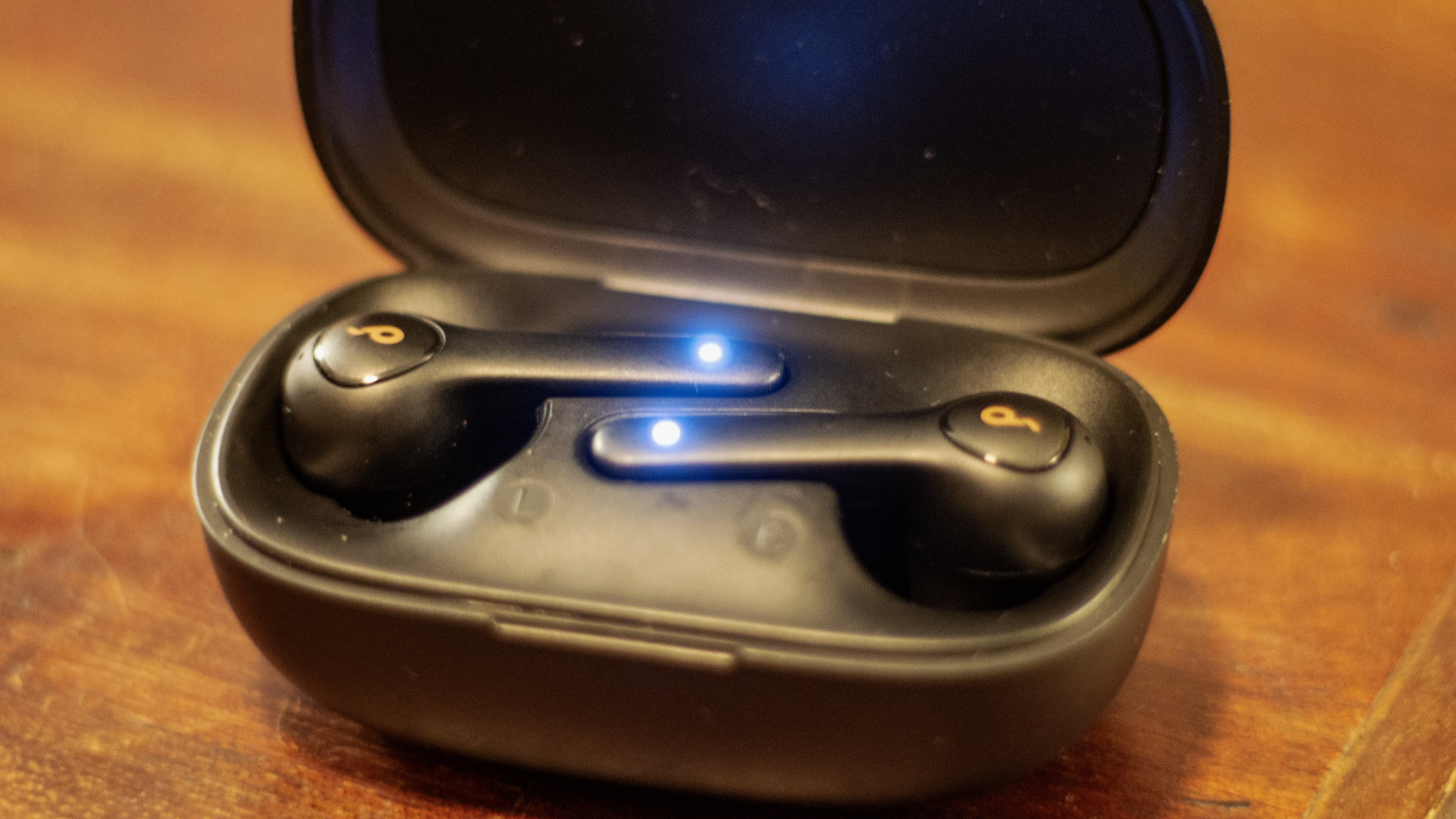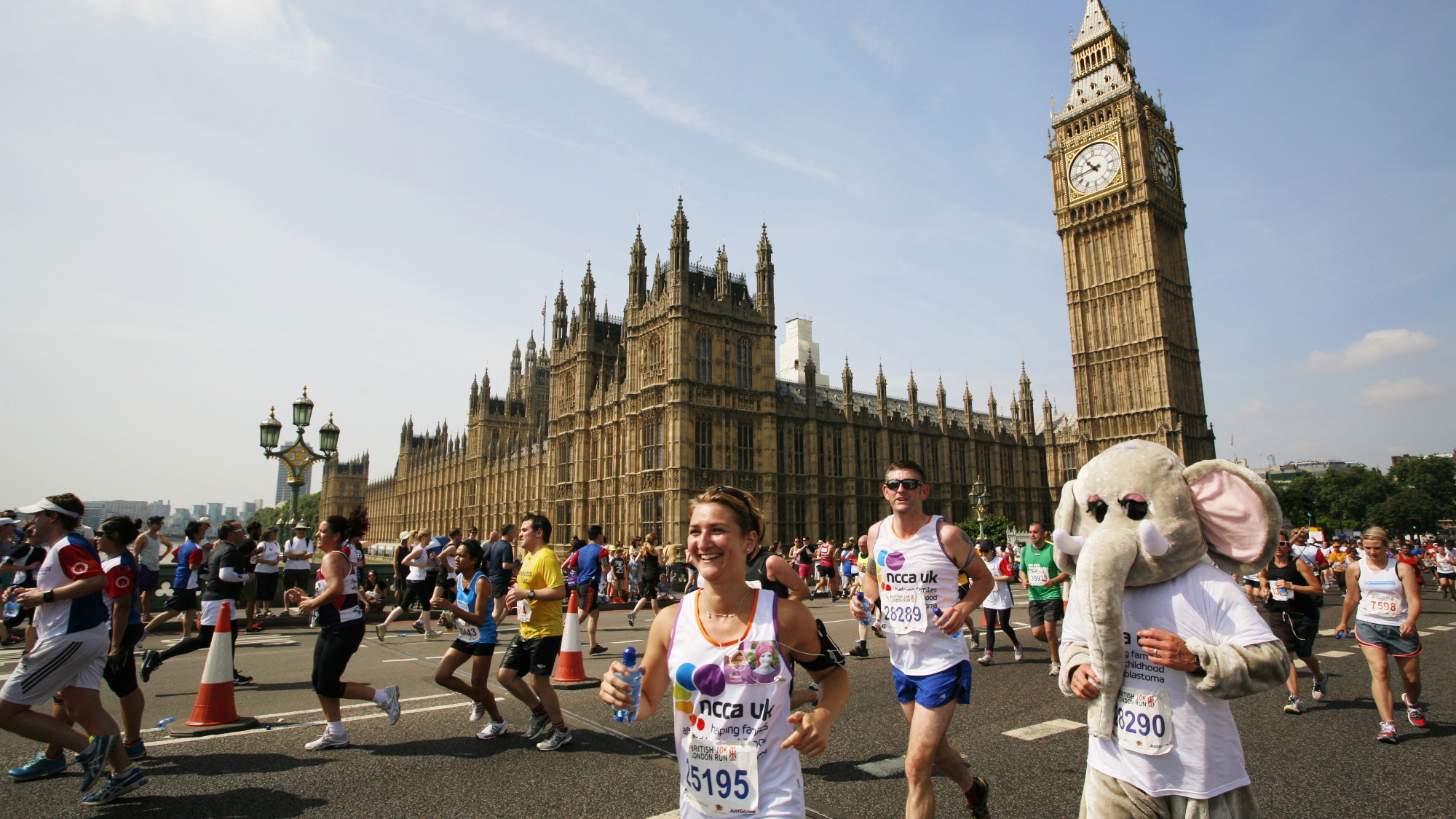I spent 16 weeks training for a marathon – here's what I learned

As I write this article, I'm due to run my first marathon in less than a week. It’s been a challenging four months of training: I’m no stranger to running, but I'd never run more than a half-marathon before taking on this challenge. Now I’ve clocked up 21 miles and some change – twice – during training, and I’m staring down the barrel of the big 26.2.
It’s exciting and scary at the same time. This four-month period of my life will forever be marked by this big thing I had to do, the obligation to train, and now that it’s almost over it feels like it’s flown by. In a week’s time, I won’t have to get up and run to work, or make up missed training time elsewhere. I won’t be running for anything, I’ll just be running. I’ve almost forgotten what that’s like.
Along the way, I’ve made plenty of use of the best running watches and best running shoes at my disposal, and my training plan has offered plenty of opportunities to test and review some of the latest and greatest kit. I’ve written a great deal about my journey so far, from the time I gave myself a sober 'hangover' by dehydrating myself during a run, to interviewing expert distance runners about what to expect on the big day.
If you’ve ever considered running a marathon, you should know what it’s like to actually train for one. Here are four things I learned, as someone who's been running casually for years, while training for my first marathon.

1. Running is therapy
Celebrated novelist Haruki Murakami is a long-distance runner who runs a marathon and a triathlon every year. In his memoir, What I Talk About When I Talk About Running, he writes: “In long-distance running the only opponent you have to beat is yourself, the way you used to be.”
Running four times a week, sometimes for long periods, racking up hours and hours on the road, gives you a lot of time with your thoughts. At times, it becomes almost like meditation. Left foot, right foot, repeat. Two movements on a loop for hours at a time, as the world moves around you. Sometimes, you’re under grimy underpasses clogged with traffic fumes, while other times you’re running along deserted footpaths by a stretch of river you’ve never explored before.
When your body starts to get tired, your brain occasionally tries to trick you into stopping, and during really long runs, despair can creep in. One memorable training run had me around mile 17: I was tired, out of energy and with a dull pain in one knee, running along an unpleasant main road. With every ragged breath, I was inhaling the exhaust from the queue of vehicles to my right. It began to rain, creating a slick layer of dirty water underfoot.
Sign up for breaking news, reviews, opinion, top tech deals, and more.
And finally, to add insult to injury, the podcast I was focusing on was interrupted by a message from my headphones: “Battery low”.
I'd lost my last shred of support. I was miserable. I could have cried; I probably would have done, if I'd had enough water in my body. However, I checked my watch, and I was two miles away from home. I’d run 17 miles, what was two more? I started inventing games to keep my spirits up, imagining I was racing other cars or pedestrians, and every time I overtook something I gained more energy. Eventually, even though the rain only got harder, the metaphorical dark cloud hanging over me began to lift, and I finished the long run feeling absolutely euphoric.
This is what’s called the 'runner’s high', the natural release of chemicals called endocannabinoids in the body during a long run. It was genuinely one of the best feelings I’ve ever experienced, and it struck me as a perfect example of a 'this too will pass' experience. During hard times in my life, I’ll remember that rainy afternoon, and resolve to keep on running.

2. You don’t need the fanciest gear
I’m fortunate to have access to some of the finest workout gear on the planet. In my role as TechRadar’s fitness, wellness and wearables editor, I’ve got everything in the TR Towers cupboards from elite-level smartwatches and the best heart rate monitors to high-tech race-day shoes.
However, even though I’ve got access to all gear in the world, I’ve only got one body. I’m tempted to use the Nike Air Zoom Alphafly Next% 2 on race day now that I’ve broken them in, but only elite athletes are really going to see many tangible benefits from such super-shoes. I did most of my training runs in an everyday pair of Saucony Ride 15s, which are available for under $100 / £80 / AU$130 if you can pick them up on sale.
To fuel my training during long runs, I used a running backpack with space for a CamelBak straw bladder I bought online for a song. On the day, I'll be using a Flipbelt Classic running belt, which has space for my phone, energy gels, and a cheap flexible water bottle in case I need to hydrate between water stations.
You don't need the best headphones either. While you might want to invest in a pair of the best running headphones, I’m using the same wireless earbuds that I’ve used for running for years: the Anker Soundcore Life P2. I’ve had these buds since 2019, and they’re the same price now as they were back then – £40 (around $50 / AU$75). They’re not perfect by any means – they have a tendency to need to connect individually rather than as a pair – but they hold battery well (unless I forget to charge them), they stay in my ears, and I’m a creature of habit. I intend to use these almost four-year-old headphones until they completely give out on me.
The bottom line? Running a marathon is expensive – aside from the race itself, you need a running kit, energy gels, shoes, headphones, water bottles – but don’t fall into the trap of thinking you need the most expensive high-end gear to do so. You can run a perfectly fine race with a pair of reasonably priced shoes and an old pair of headphones.

3. Eating more helps
As my weekly mileage increased, my energy levels dropped. I felt sluggish and bad not just on my runs, but at other times during the day. I naturally assumed that this was a result of doing more exercise, and I wondered how I was going to manage the later stages of my training plan.
While complaining about this to my wife, I showed the total calorie count of my last long run, and she looked at me as if I was the dumbest person on the planet.
“You’re burning more calories than ever, and you’re eating the same amount as you were before. No wonder you’re tired.”
She was right. I began carb-loading with extra portions of starchy foods like bread, rice and pasta a few days before long runs, and my performance skyrocketed. Researchers from governing bodies such as Welsh Athletics recommend eating more than usual in the 48 hours before your long run, and I was going for a long run every week. You need to pack your body full of energy, ready to expend on the day.
And when I started eating? I found I couldn’t stop. On an evening out with some of the TechRadar team, my colleagues were groaning under the weight of their half-finished sourdough pizzas, and I was still happily packing it away. I ended up finishing some of theirs too. I’m not a large man – around 70kgs or 155lbs, soaking wet – and I didn’t feel like I was forcing all this food down, but I was eating quite comfortably like I had two stomachs. I still am.
I’m going to need a new fitness goal after this marathon, otherwise I’m going to lose sight of my toes.

4. Listen to the experts
There’s a wealth of knowledge and information out there for beginner marathon runners to get their teeth into. Of course, you’ll find misinformation on community forums and social media sites such as YouTube and TikTok, but it’s always worth seeking out nuggets of info from trusted sources, including runners who've been there and done that.
I’ve interviewed several serious long-distance runners, and I asked them all for their marathon-running tips, and by far the best one I received was from elite distance athlete Dewi Griffiths. He recommended that I sign up for a race beforehand, to get my brain used to turning up at the starting line, collecting a race number, and figuring out my routine on the day – all the stuff you don’t think about during training, that adds to the race-day nerves.
That made a lot of sense to me. After all, we train for every other aspect of the run, from the shoes we’ll wear to the pace we want to keep – so why not train for the admin part too? I duly signed up for London’s Olympic Park half-marathon, with about 10 days’ notice. I just figured I’d treat it as that weekend’s long run.
Sure enough, nothing went right on the day – I turned up late, collected my race number in a hurry, ran to the loo, pelted out of the men's room, and practically straight onto the course. It was only after I crossed the start line that I realized I hadn’t warmed up properly. I thought this was already a disaster in the making.
But, sure enough, I relaxed into it very quickly, and I began to enjoy the atmosphere of running alongside hundreds of other runners. The sense of camaraderie was uplifting, and I ran a half-marathon PB of 1:52. It took away a whole lot of my nervousness around the upcoming race, and helped me realize that, at the end of the day, it’s just a long run with a lump of metal handed to you at the end.

Matt is TechRadar's expert on all things fitness, wellness and wearable tech.
A former staffer at Men's Health, he holds a Master's Degree in journalism from Cardiff and has written for brands like Runner's World, Women's Health, Men's Fitness, LiveScience and Fit&Well on everything fitness tech, exercise, nutrition and mental wellbeing.
Matt's a keen runner, ex-kickboxer, not averse to the odd yoga flow, and insists everyone should stretch every morning. When he’s not training or writing about health and fitness, he can be found reading doorstop-thick fantasy books with lots of fictional maps in them.